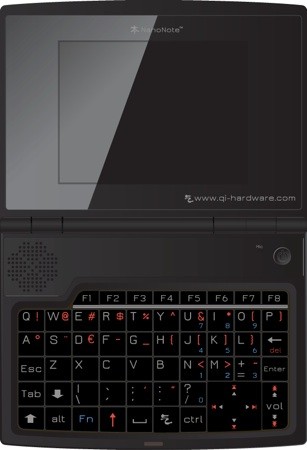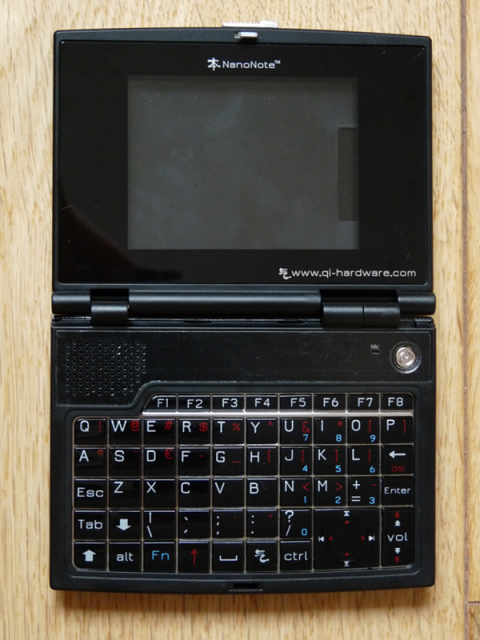One of the reasons I love my Nokia e71 so much is that it’s a pretty decent example of convergence. Like the iPhone and others, it rolls so many features into one box that we’ve stopped calling these things mobile phones and started calling them mobile devices, almost without noticing. Heck, the ‘in-crowd’ just talks about ‘mobile’ as though the OED had recategorised that word from adjective to noun. It’s not so much linguistic arrogance as it is necessity – you have to go to science fiction or back to mythology to find examples of the kind of multifunction tool these devices have become and are still becoming.
The iPhone is without a doubt the poster boy for this, as its marketing is, ironically enough, pretty much founded on using it for things other than as an actual phone (and that’s why the iPad, daftly named as it is, will probably be a great success but not as great as its more dimunitive cousin. The whole attraction of the iPhone’s ability to be more than a phone is based on the fact that you are already carrying it around with you). One quick download and your phone becomes a translation device, a 2-D barcode reader, or any one of a few hundred other devices.
My problem is that I don’t really like the iPhone. It’s very slick and very pretty but… no background applications and a hefty price tag and to use it as intended, I pretty much have to have a mac. Sure, you can fake around that need, but it’s a chore. The Nokia e71 is wonderful in hardware (if you overlook the very poor camera which is hard pressed to handle the basic business task of recording the contents of a whiteboard after a brainstorming session — unforgivable given that mid-range phones handled this task better five years ago) but it’s awkward to setup with calendars and contacts and apps, even going through Ovi (which is why I’m still using a paper diary).
Once you decide against the iPhone and Nokia (and Blackberry because support for it in Ireland is again, all tied to one supplier and it’s not the best supported device here even though it’s huge in Asia), you’re pretty much left with the outliers right now, meaning Android. Yes, Android is an outlier. It gets great press without a doubt, but if you’re not a technology or gadget geek, it’s just another phone that’s a bit dingy-looking with its off-white case that doesn’t sit flat in a jacket pocket. Most people don’t know it’s a software platform, not a phone — and most of them wouldn’t understand what you meant if you told them (and amongst the real experts, btw, there are a few who don’t think much of it at all). And if you don’t mean Android, you’re right out there into the fringe at the moment. Which means stuff gets very interesting and individual indeed, which is where things like the 本 (běn) NanoNote come in:
The Ben Nanonote looks like it might be a very interesting part of the fringe indeed. It’s small, but has a physical keyboard (humans like haptic interfaces for a good reason) and is completely open (both in hardware and software). Granted, it’s no speed demon – the iPhone ARM chips have a bit more oomph than it does – but even so, it could run a reasonably wide array of applications. It’s a long way from perfect, since it has no camera, no inbuilt wifi or inbuilt 3G or inbuilt WiMAX; but it’s intended as a first model and for a first model it’s got some promise.
Not least of which is that it costs around €70 at the moment. Add in the €60 you have to pay to get a supported microSD wifi card, and you’re still looking at less than a third of the cost of most netbooks over here. It’s a hobbyist platform rather than a serious do-work-on-this box at the moment, but looking at the upcoming Ya and Mu Nanonote platforms and seeing how building in wifi and other hardware is so possible, you have to ask the question of how long it’ll be until a commercial interest starts capitalising on the work Qi’s done here, and creates a larger market than just the hobbyist fringe. There’s a principle in open source software that the fastest way to change how something is done is to do it differently and release the code. Personally, I hope that trend holds true in hardware and we see a new market of palmtops acting as miniature netbooks; I would love to get a platform the size of the Nanonote, just with a few more networking options (as in, all of them – WiFi, WiMAX, 3G, LTE, the works). A true mobile device.
And yes, I still want an N900. If nothing else, it’d make a good stopgap measure 😀 In the meantime… well, €130 isn’t too much to drop to play with a toy like this, right?
Tags: ben, ben nanonote, copyleft, e71, gadget, iphone, Linux, Mobile, mu, mu nanonote, nanonote, nokia, nokia e71, open source hardware, palmtop, qi hardware, ya, ya nanonote





As a NanoNote owner, I’m quite sorry to tell you, that from what I’ve read in the Nanonote mailing lists, the Spectec cards are awfully hard to get, and also that the WiFi support is only for “hardcore hackers” (I think I’m quoting literally one mail, even). But the Nano is really nice to hold in your hands, in spite of its lack of WiFi.